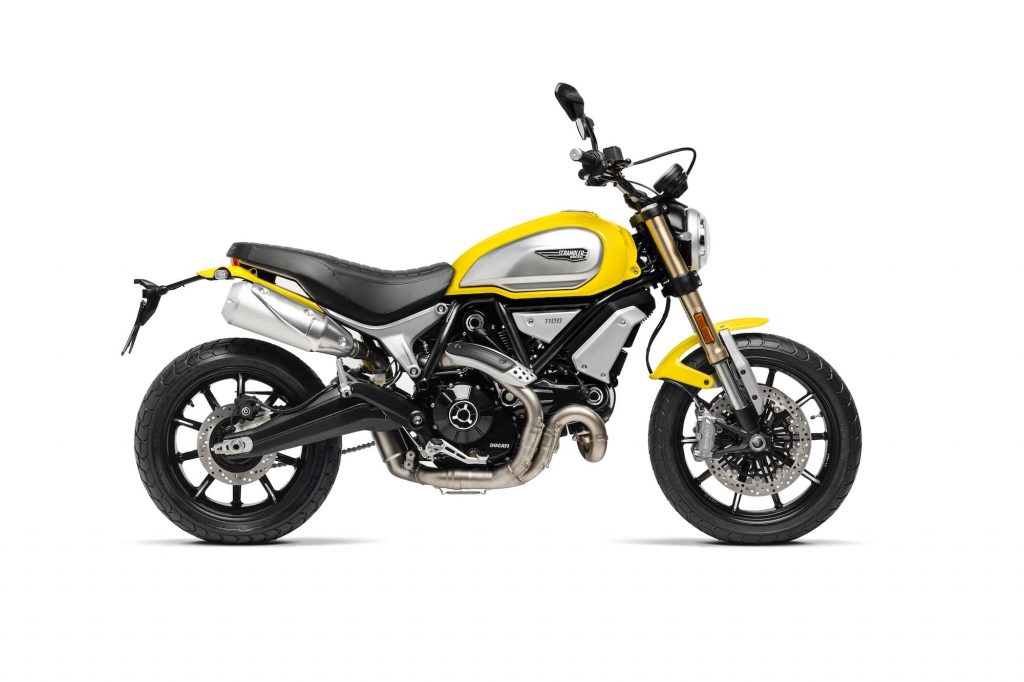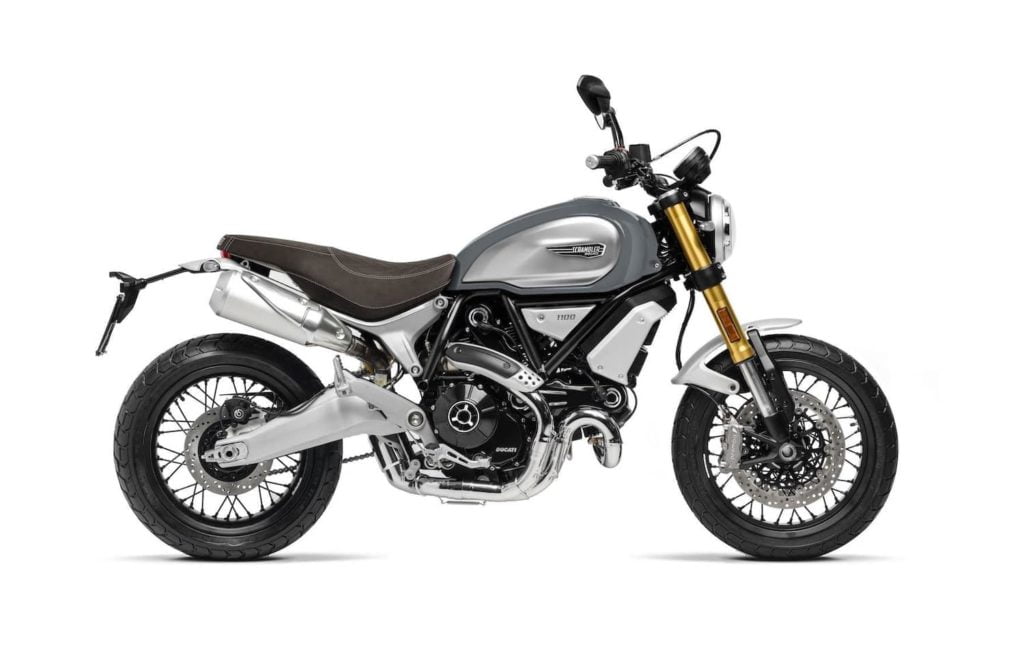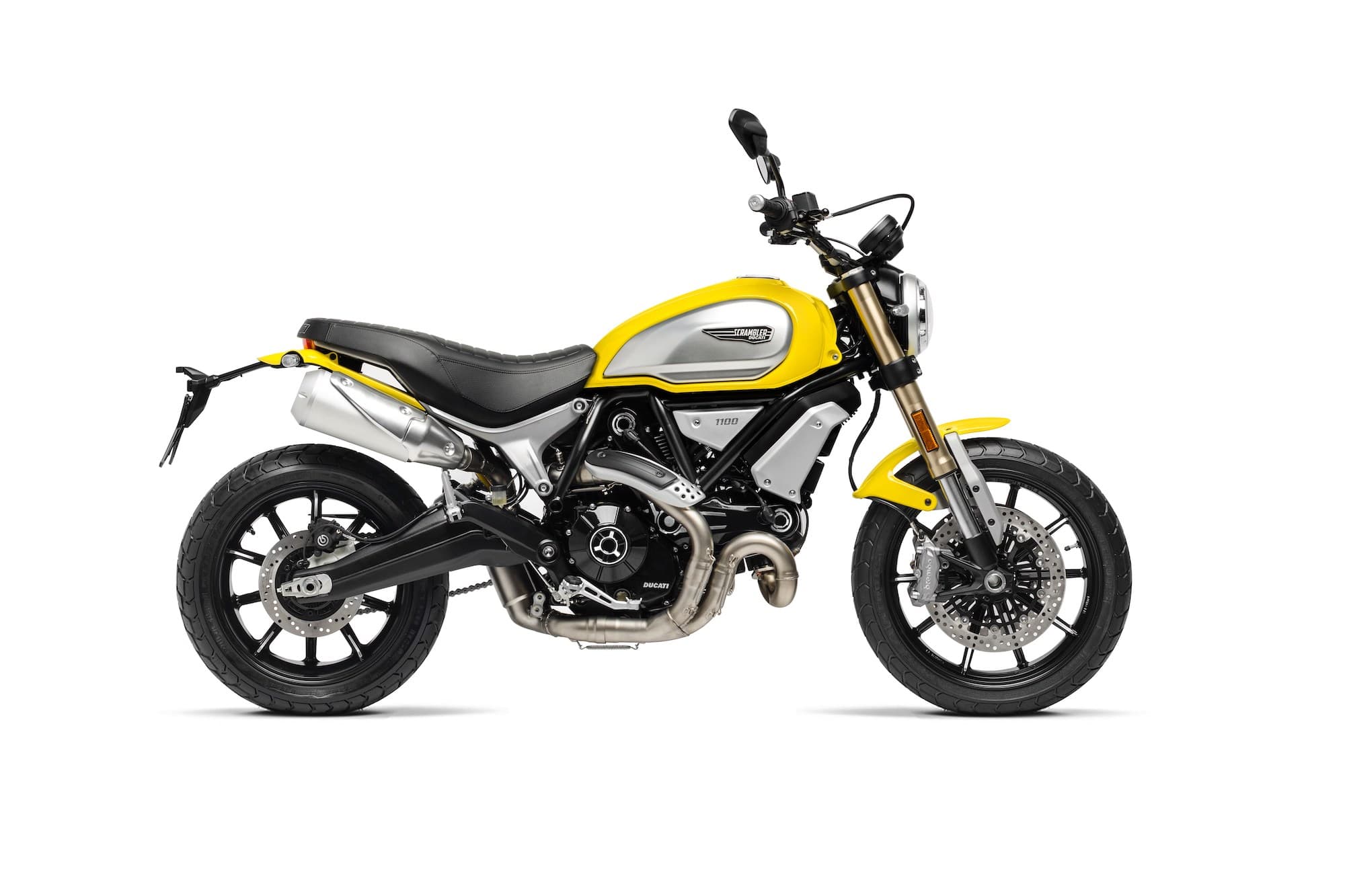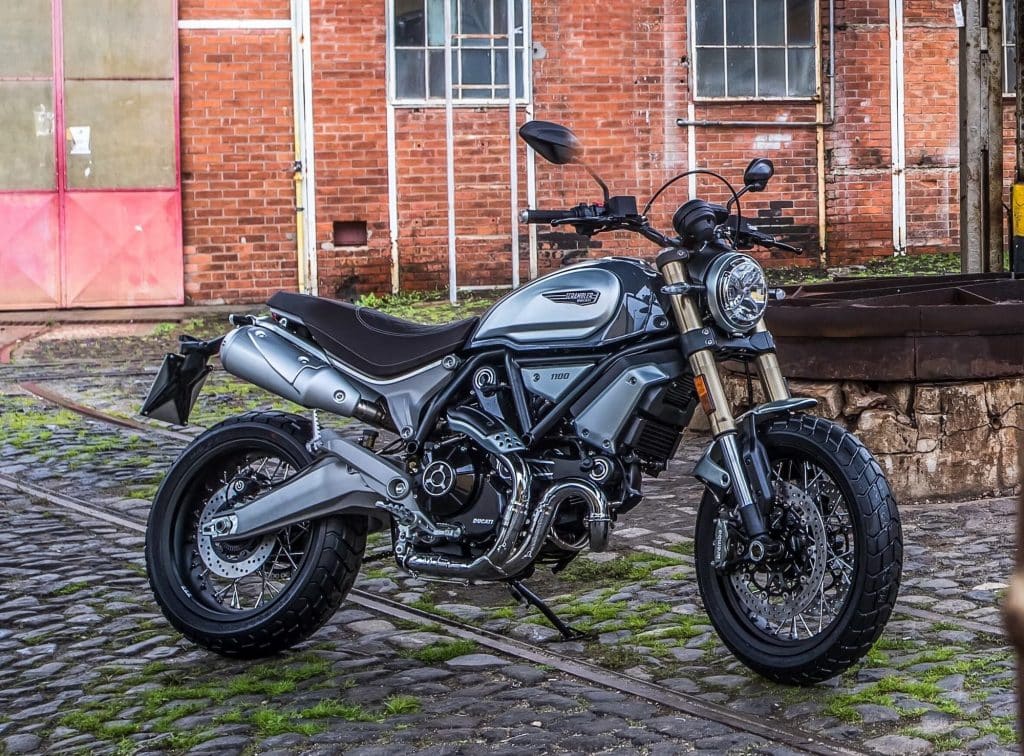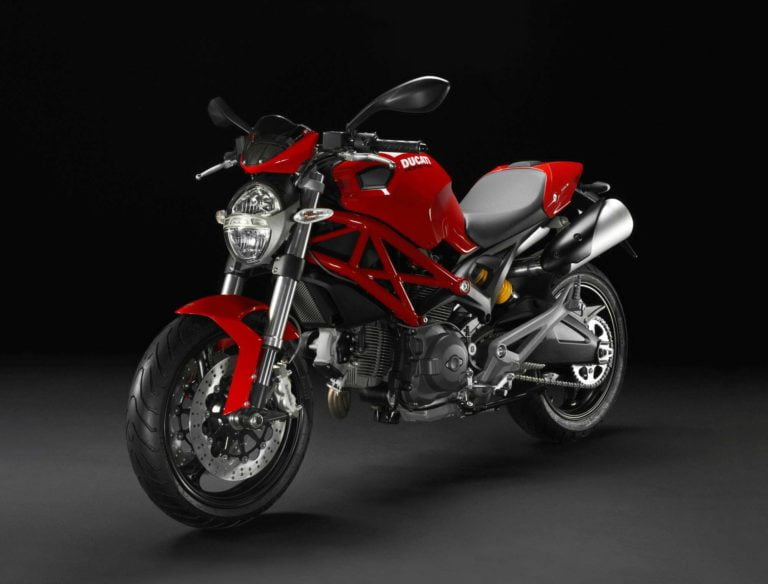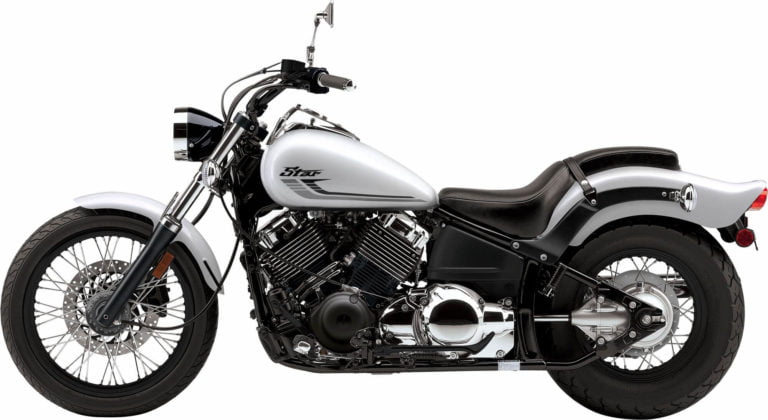Ducati Scrambler 1100 Complete Maintenance Schedule
The Ducati Scrambler 1100 was released in 2018 as a bigger brother to the original Ducati Scrambler, now known as the Ducati Scrambler 800.
The maintenance schedule for most of the Ducati Scrambler motorcycles is the same — even mostly the same between the 800 and 1100 series. They are both air- and oil-cooled L-twins with 2-valve desmodromic engines, just different capacities. However, the parts are slightly different.
This maintenance schedule applies to all models of the Ducati Scrambler 1100 — including the Pro, Sport Pro, Special, and Dark variants. The engine and drive components are the same.
All years for the Scrambler 1100 include the Scrambler 1100 Special — the changes don’t affect the service intervals.
This site has links for things like oil and spark plugs from which we earn a commission (which unfortunately nobody can save, not even us). If you appreciate this work, then please use those links. Thanks!
What you need to maintain the Ducati Scrambler 1100
The Ducati Scrambler is a pretty easy motorcycle to maintain, apart from the valve adjustments. But even replacing the belts periodically is not hard. Just make sure you get the right belts, and don’t leave it too late!
Firstly, you may need the following tools to service the Ducati Scrambler: Essential Motorcycle maintenance Tools.
Secondly, you’ll need the following specific consumables to replace on any Ducati Scrambler with the 1100 motor.
| Part | Ducati Scrambler 1100 spec |
|---|---|
| Engine oil | Ducati recommends Shell Advance Ultra 15W-50 motorcycle oil. You need 3.7L for a complete oil change. It’s hard to find and expensive so people suggest Mobil 1 Synthetic. A lot of Ducati owners use Shell Rotella T6… check out the forums. |
| Oil filter | Genuine Ducati part is 44440038A the Ducati Scrambler. I’d suggest removing that and using a Hiflofiltro HF153RC oil filter which can be changed with a normal wrench. |
| Brake fluid, Clutch fluid | Ducati recommends Shell Advance DOT 4, but that’s quite hard to find, so Castrol DOT 4 Synthetic is a good and very high-quality alternative. |
| Timing belt | Is it time to change the timing belt? Don’t put it off… a broken timing belt will cost you a lot (bent valves)! You need part number 73740211A. |
| Front brake pads | OEM part number for the front pads is 61341021A. You can also use EBC FA630HH for more bite and less fade as you apply pressure. |
| Rear brake pads | OEM part number for the rear pads is 61340761A. You can also use EBC FA213HH for more bite and less fade as you apply pressure. |
| Air filter | OEM part for the air filter is 42610491A. You can also use K&N air filter part DU-1112. |
| Spark plugs | NGK code DCPR8E. Note they’re sold individually. |
You also may need the following general consumables for servicing the Ducati Scrambler 1100.
| Description |
|---|
| Paddock Stand — Makes maintaining your chain or doing other maintenance much easier. |
| Motul chain paste — one of the most highly-regarded chain lubes. Easy to apply, doesn’t fling off. If you need more stuff, get the Motul chain care kit as an affordable package. |
| Always good to have on hand lithium soap-based grease for lubing external pivot points (like the swingarm) and bearings. |
| Use Protect all cable life to lubricate your cables and controls. |
Ducati Scrambler 1100 Maintenance Schedule
Below is the overall maintenance schedule for the Ducati Scrambler 1100. Each item has a distance interval and a time interval — you should do whatever’s sooner. E.g. if you get to the 12 month mark and you haven’t done 12000 kms/ 7500 miles, you should change the oil and filter anyway.
The table is from Ducati’s “Transparent Maintenance” service schedule sheet, just re-arranged a bit to make it easier to understand.
Generally Ducati Scrambler 1100 maintenance is broken up into three parts
- Initial service at 1,000 kms or 600 miles
- Minor service every 12,000 kms or 7,500 miles where you check valve clearance (and pretty much everything else)
- Major service every 24,000 kms or 15,000 miles where you change timing belts and spark plugs
You have to change the timing belts every 15,000 miles or 5 years — whichever comes sooner.
There’s also the fork fluid, which is recommended to be changed after a set distance travelled.
| km x 1000 | 1 | 12 | 24 | 36 | 48 | 60 | Every |
|---|---|---|---|---|---|---|---|
| mi x 1000 | 0.6 | 7.5 | 15 | 22.5 | 30 | 37.5 | X months |
| [D] Read fault memory with the DDS 2.0 tester, and check technical updates and recall campaigns on DCS | X | X | X | X | X | X | 12 |
| Change engine oil and filter | X | X | X | X | X | X | 12 |
| Check and clean air filter | X | X | X | X | X | 12 | |
| Change air filter | X | X | |||||
| Change timing belts | X | X | 60 | ||||
| Check and/or adjust valve clearance | X | X | X | X | X | ||
| Replace spark plugs | X | X | |||||
| Check tightening of vertical head stud bolt nut, exhaust side, generator | X | X | X | X | X | ||
| Change front fork fluid (Every 36,000 km/ 22,500 miles) | |||||||
| Visually check the front fork and rear shock absorber seals | X | X | X | X | X | X | 12 |
| Check brake and clutch fluid level (where present) | X | X | X | X | X | X | 12 |
| Change brake and clutch fluid (where present) | X | X | X | X | X | 24 | |
| Check front and rear brake disc and pad wear | X | X | X | X | X | 12 | |
| Check the proper tightening of brake calliper bolts, brake disc screws, front and rear wheel nuts and rear sprocket nut | X | X | X | X | X | 12 | |
| Check frame-to-engine, frame-to-swinging arm and frame-to-rear shock absorber fasteners tightening | X | X | X | X | X | 12 | |
| Check the wheel hub bearings | X | X | X | X | X | 12 | |
| Check the cush drive damper on rear sprocket and lubricate the rear wheel shaft | X | X | |||||
| Check chain, rear sprocket and sprocket wear and check final drive chain tension, lubrication and stretch. (NOTE: It is recommended to change the final drive chain kit within 20,000 km/12,000 mi.) | X | X | X | X | X | X | 12 |
| Check steering tube bearing clearance | X | X | X | X | X | 12 | |
| Check spoked wheel as indicated in the workshop manual (where present) | X | X | X | X | X | X | 12 |
| Check the freedom of movement and tightening of the side stand | X | X | X | X | X | X | 12 |
| Check that all gaiters and visible hoses (i.e. fuel, brake and clutch, cooling system, bleed, drain hoses, etc.) are not cracked, are tight and properly housed | X | X | X | X | X | X | 12 |
| Check rear brake lever free play and handlebar lever and pedal control lubrication | X | X | X | X | X | X | 12 |
| Check cable clutch lever free play (where installed) | X | X | X | X | X | X | 12 |
| Check tyre pressure and wear | X | X | X | X | X | X | 12 |
| Check the operation of all electric safety devices (side stand and clutch sensor, front and rear brake switch, engine stop switch, gear/neutral sensor) | X | X | X | X | X | X | 12 |
| Check lighting devices, turn indicators, horn and controls operation | X | X | X | X | X | X | 12 |
| Final test and road test of the motorcycle, testing safety devices (e.g. ABS and DTC), electric fans and idling | X | X | X | X | X | X | 12 |
| Softly clean the motorcycle | X | X | X | X | X | X | 12 |
| [D] Service coupon registration with turning off of Service warning light on instrument panel with DDS 2.0 and filling in of the on-board documentation (Service Booklet) | X | X | X | X | X | X | 12 |
Tires and Tire Pressures for the Ducati Scrambler 1100
All Scrambler 1100 models run a radial tubeless tire, other than the Ducati Scrambler 1100 Special, which runs a tire with an inner tube.
Below are the recommended tire sizes and pressures.
| Wheel | Tire size | Tire pressure (cold) |
|---|---|---|
| Front | 1100 / 1100 Sport / 1100 Special: 120/70ZR18 1100 Pro / SportPro: 120/80ZR18 | 2.3-2.4 bar / 33-35 psi |
| Rear | 180/55ZR17 | 2.5-2.9 bar (36-42 psi) |
About the Ducati Scrambler 1100
The Scrambler has been an attempt by Ducati to capture the new retro wave, using air/oil-cooled engines from older generation Ducatis in modern chassis, with ride aids.
At its core, the Ducati Scrambler is an off-road-styled road bike. It has a sporty standard riding position and an engine that’s revvy and full of character. It’s a Ducati L-Twin after all!
The Ducati Scrambler 1100 is a bigger sibling for the earlier Ducati Scrambler 800 (which was just known as the Ducati Scrambler when it was first launched).
The Scrambler 1100 uses a 1079cc L-twin engine that’s air- and oil-cooled, with very few rider aids, and … not much else. It’s a back-to-basics motorcycle in an era when most motorcycles (including most of Ducati’s line-up) are laden with traction control, cornering ABS (which is awesome), and many other things to get in the way of you and riding. The Scrambler was originally more pure, though these days they also have cornering ABS and traction control.
The Ducati Scrambler 1100 uses the same engine as the old Ducati Monster 1100, detuned slightly to produce 64kW (86hp) at peak. The position is a lot more upright than that on a Monster, so the lower power seems appropriate.
The slightly dated engine configuration (being air- and oil-cooled) does mean that the service intervals for the Ducati Scrambler 1100 are more frequent. So if you’re considering a Scrambler or a liquid-cooled Ducati Monster, you should know you’ll have to crack open the Scrambler a lot more often.
Other premium manufacturers have created Scramblers (Triumph having been much earlier to the market), but Ducati’s entry is lighter AND more powerful.
That said, despite the moniker, people advise you should never mistake a Scrambler for a dirt bike. It’s a road bike that won’t freak out on dirt roads or the occasional fire trail.
Ducati Scrambler Manual
The above was sourced from the Transparent Maintenance sheet provided by Ducati, obtained by us in 2020, which ships with the Ducati Scrambler 1100.

You can get the original copy of the maintenance table here.


